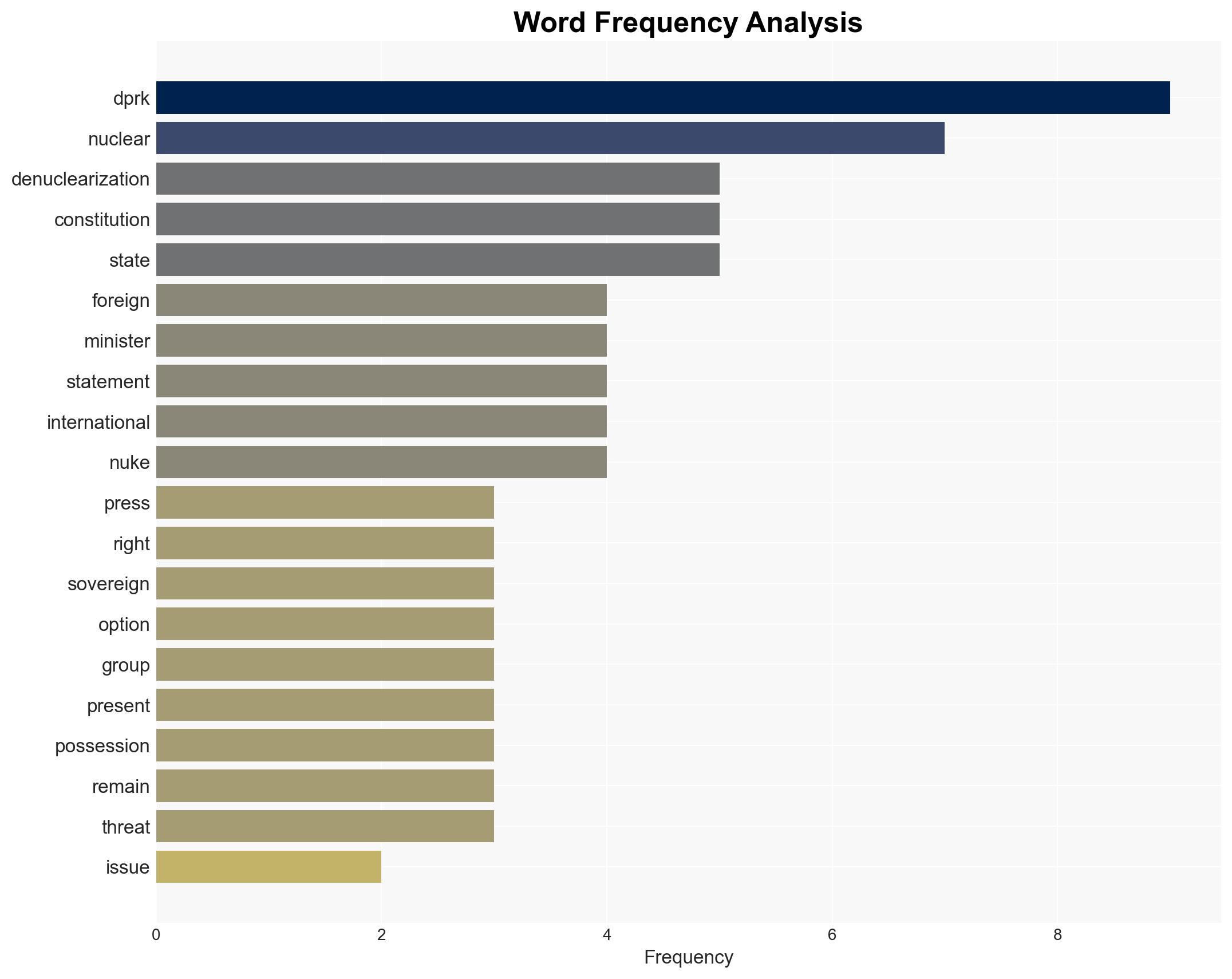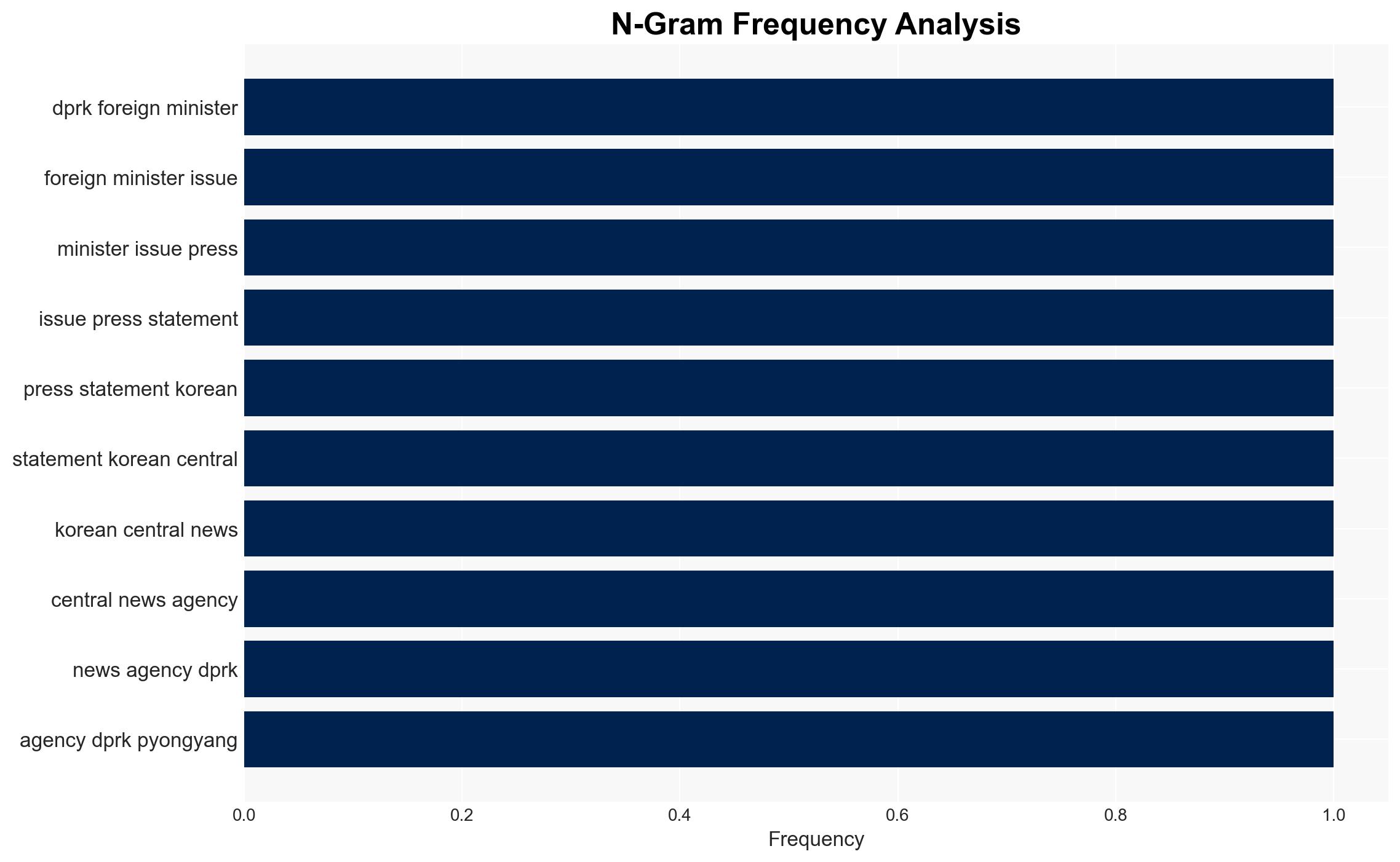DPRK Foreign Minister Issues Press Statement – Globalsecurity.org
Published on: 2025-11-14
AI-powered OSINT brief from verified open sources. Automated NLP signal extraction with human verification. See our Methodology and Why WorldWideWatchers.
Intelligence Report: DPRK Foreign Minister Issues Press Statement – Globalsecurity.org
1. BLUF (Bottom Line Up Front)
The DPRK’s recent press statement reinforces its unwavering stance on nuclear possession as a sovereign right, rejecting international calls for denuclearization. The most supported hypothesis is that the DPRK aims to solidify its nuclear deterrent as a strategic leverage tool amidst perceived external threats. Confidence Level: Moderate. Recommended action includes reinforcing diplomatic channels and enhancing regional security alliances to deter potential escalation.
2. Competing Hypotheses
Hypothesis 1: The DPRK’s statement is a strategic move to reaffirm its nuclear stance and deter perceived threats from hostile states, leveraging its nuclear capability as a bargaining chip in international negotiations.
Hypothesis 2: The statement is primarily domestic-focused, aimed at consolidating internal support by portraying the regime as a strong defender of national sovereignty against foreign pressure.
Hypothesis 1 is more likely due to the explicit international focus and the emphasis on nuclear deterrence as a response to external threats, aligning with past DPRK behavior in international relations.
3. Key Assumptions and Red Flags
Assumptions: The DPRK perceives a genuine threat from international actors, particularly nuclear-capable states. The regime’s rhetoric is consistent with its historical stance on nuclear deterrence.
Red Flags: The statement’s timing could indicate an upcoming provocation or test. The use of strong rhetoric may be a precursor to further escalation.
Deception Indicators: The DPRK’s narrative may exaggerate external threats to justify its nuclear program domestically and internationally.
4. Implications and Strategic Risks
The DPRK’s stance could lead to increased regional tensions, prompting neighboring countries to bolster their defense postures. This may trigger an arms race or escalate into cyber and informational warfare. Economically, sanctions could tighten, impacting regional trade dynamics.
5. Recommendations and Outlook
- Enhance diplomatic engagement with the DPRK to open dialogue channels and reduce miscommunication risks.
- Strengthen regional security alliances to deter potential DPRK provocations.
- Monitor DPRK’s military activities for signs of escalation.
- Best-case scenario: DPRK engages in dialogue, reducing regional tensions.
- Worst-case scenario: DPRK conducts a nuclear test, leading to heightened military tensions.
- Most-likely scenario: Continued diplomatic stalemate with periodic provocations by the DPRK.
6. Key Individuals and Entities
Choe Son Hui (DPRK Foreign Minister), Kim Jong Un (DPRK Leader)
7. Thematic Tags
Structured Analytic Techniques Applied
- Cognitive Bias Stress Test: Expose and correct potential biases in assessments through red-teaming and structured challenge.
- Bayesian Scenario Modeling: Use probabilistic forecasting for conflict trajectories or escalation likelihood.
- Network Influence Mapping: Map relationships between state and non-state actors for impact estimation.
Explore more:
National Security Threats Briefs ·
Daily Summary ·
Support us
·





